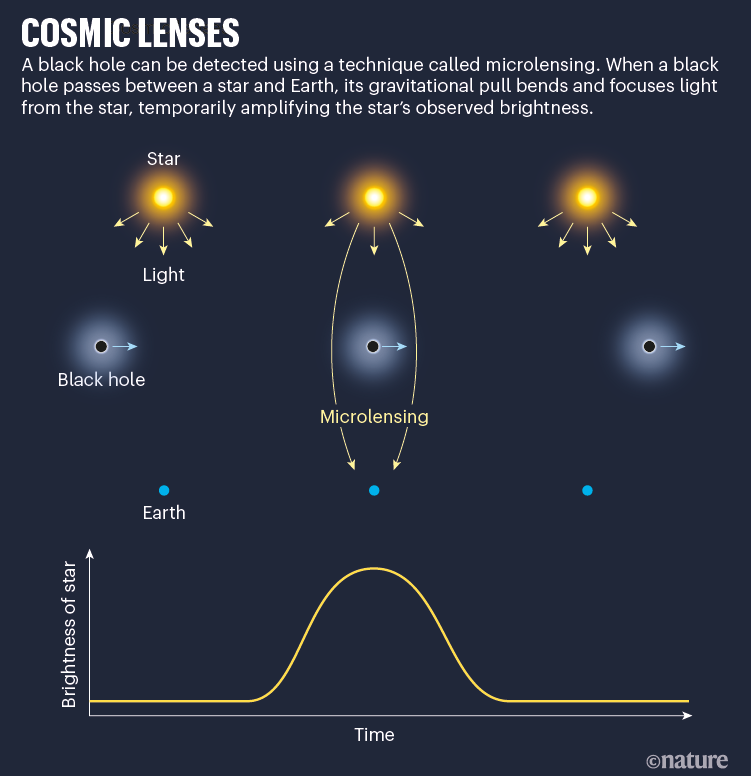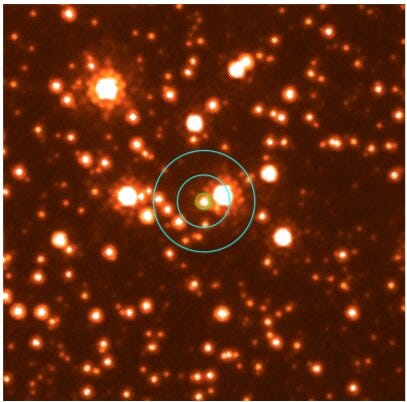First Detection of a Rogue Black Hole Traveling Through Space
Written on
Chapter 1: Introduction to Rogue Black Holes
Astronomers have potentially discovered the first known rogue black hole, an elusive cosmic entity traversing the galaxy and possibly holding secrets about supernova explosions. While solitary black holes are plentiful in galaxies, they are notoriously difficult to detect. This is primarily due to their extraordinary gravitational forces, which are so intense that not even light can escape their grasp. Over the years, researchers have established that while these black holes are abundant, they remain invisible unless they interact with stars or collide to produce gravitational waves that ripple through the cosmos.
Detection of black holes presents a formidable challenge due to the vast darkness of space. However, an international team of scientists has confirmed the existence of a solitary black hole that is hurtling through interstellar space. The initial detection occurred back in 2011 using a method called microlensing, which enables astronomers to observe a black hole when it passes in front of a star relative to Earth, causing the star's light to bend due to the black hole's gravity.
This research initiative began over a decade ago, as part of two distinct projects: the Microlensing Observations in Astrophysics (MOA) based in New Zealand and the Optical Gravitational Lensing Experiment (OGLE) situated in Chile. Both projects noted a star that appeared to brighten, leading to further investigation. However, confirming the existence of the black hole required nearly ten years of observations utilizing NASA’s Hubble Space Telescope alongside various ground-based observatories.
The first video discusses the groundbreaking discovery of the rogue black hole, revealing its path through the galaxy and the implications for our understanding of black holes.
Chapter 2: The Discovery Process

“There should be 100 million such black holes in the galaxy; they should be everywhere, but it’s very hard to find them.”
~ Kailash Sahu, Astronomer at STSI
The team's initial candidates included eight objects that lacked their own light but brightened a star in the background for an extended period of at least 200 days. Follow-up data confirmed that one of these candidates was indeed a black hole. Such rogue black holes are believed to be fairly common, typically forming when a star with a mass exceeding 20 times that of the Sun meets its end. In this case, researchers estimated the rogue black hole's mass to be seven times that of our Sun.
The second video explores the implications of this rogue black hole's discovery, detailing how it was spotted for the first time and what it means for future research.
Chapter 3: Implications and Future Research


One of the scientists involved in developing the techniques for brightening and deflection believes the detection of this lone black hole is both convincing and accurate. Based on data from ground observatories, the distance to the black hole was estimated to be approximately 1.58 kiloparsecs (around 5,150 light years) from Earth. The black hole is traveling at a speed of approximately 45 kilometers per second, which is somewhat faster than the typical speeds of 10 to 30 kilometers per second observed in other stars nearby. A plausible explanation for this speed is that the black hole received an additional 'kick' during its formation in a supernova explosion.
The phenomenon of these 'kicks' has been a topic of significant discussion within the scientific community, as it could lead to a better understanding of supernovae. Although this discovery demonstrates an exciting technique, much remains to be learned from just a single example. The team is currently investigating three other promising black hole candidates to provide further insights into the origins and prevalence of isolated black holes, as well as to uncover a broader range of these cosmic entities.
Complete research findings were published on the preprint server arXiv.